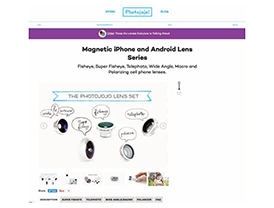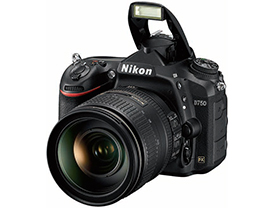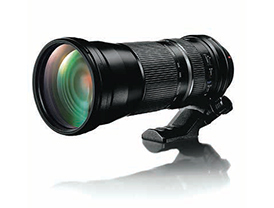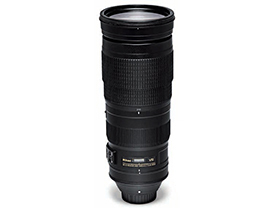 Confused
Confused
Some months ago, when I visited your office, I showed you a photo, which you said was nice, but my friend, who is also a good photographer, said it was not nice. Now I am confused.
Vishnu S. G. via email
Friends usually do not give their honest opinion for fear of hurting your sentiments but if your friend has criticised your photo, (and you say that he is a good photographer), he is an honest, good man!
There could be several reasons why he did not like your picture. In any case, no one in the world can make an image that everyone will like. In my case, I try to encourage the person whose pictures I evaluate, but at the same time, I show him the flaws and try to explain how those flaws could be avoided the next time.
In any image evaluation, the evaluator’s frame of mind at that particular moment also plays an important role. If the evaluator is in a bad mood, chances are that he will be harsh in his evaluation. For this reason, I do not evaluate any picture when I am disturbed.
With an open mind, ask your friend as to why he did not like your photo. Think from his point of view. Consider his comments and try to keep those comments in mind the next time you take pictures. This is not a question of who is right and who is wrong.
Importance of Backgrounds
You always say that the background is just as important as the subject. But very often, the subject is in front of a poor background. What should one do then?
Ajay, via email
You could either:
1. Take the shot in spite of the poor background and accept what you get
2. Don’t take the shot
3. Take the shot but change the background in post-processing
If you consider yourself as a documentary photographer, please do not edit your pictures. If, like me, you consider yourself as a digital artist, and if you accept that photography is an art form, then you can change the background. It is beyond the scope of this write-up to Ask your question to Uncle at sp@nextgenpublishing.net explain how the background can be changed (in the past, we have covered the topic of changing backgrounds).
Mobile Camera Lenses and More
I am a newbie in photography. I wanted to know which external lenses can I buy for a mobile camera? Which camera do you advice for night photography and for underwater photography?
Chirag Jain, via email
We haven’t tested any external lenses for mobile cameras. We understand from some users that a company called Photojojo makes various types (super fisheye, wide-angle, macro, telephoto) of lenses for iphone and Android. Kindly visit their website for details.
I would consider a ‘fast’ lens and a full-frame model to be more important than any particular camera for night photography. Every camera today offers shutter speeds up to 30 seconds, plus ‘B’ (Bulb mode). If you are meaning ‘astro-photography’, you could take multiple shots and then blend them together in Photoshop or any other suitable image editing program.
For underwater photography, you could consider compact waterproof cameras (e.g. Olymus TG3/TG4, Nikon Coolpix AW130/AW120, Canon PowerShot D30) or an underwater housing (from companys like Ikelite, Olympus, Nauticam etc) if you have a D-SLR/Mirrorless interchangeable lens cameras. Note that some of these housings are prohibitively expensive.



Camera / D-SLR Lenses
What are cinema lenses and D-SLR lenses. Please explain in detail.
Virag Sharan, Jaipur
There are lots of differences between ‘still’ camera lenses and ‘cine’ lenses. A few that I am aware are mentioned below:
A ‘cine’ lens, as the name suggests, is designed for cinematic productions where the demands on the lenses are very different than the demands placed on ‘still’ camera lenses. ‘Still’ camera lenses are designed for still or non-moving subjects. Generally, still lenses and cine lenses are not interchangeable; you cannot use (may be with some exceptions) a cine lens on a still camera and vice versa.
In general, cine lenses are more rugged – better build quality, always weather proof (since they are likely to be used in all weather conditions), all of them are physically the same size (irrespective of the focal lengths), all of them weigh the same and have the same filter diameter. Optically, cine lenses are superior to (most) still lenses.
Still camera lenses generally have a very small ‘focus throw’ for faster autofocus (this means that the focussing ring turns from closest focussing to infinity in a relatively small distance of few degrees) whereas cine lenses always have a very long throw for greater accuracy. When using a still camera for video, the zooming action is almost always jerky; with cine lenses, the zooming action is always very smooth; still lenses don’t incorporate a ‘follow focus’ system that use gears for smooth focussing or zooming.
The apertures (or to be more accurate, the T-stops) on cine lenses are calibrated to a much higher standard so that there is no sudden change in brightness levels as the apertures change. The image characteristics on cine lenses don’t vary from lens to lens (but they often do change with ‘still’ lenses). With cine lenses, there are no click-stops (detents) between apertures.
Cine lenses are exorbitantly expensive and the manufacturing tolerances are of the highest standards.
A Lens Query
I am a scientist by profession and passionate about photography. I have a Nikon D750 and want to buy a Tamron SP 150-600 mm. Can I go for it?
Dr Tarun Sharma
Yes, you may. You may also consider the Nikon 200-500 mm, which, though shorter in focal length, is a bit ‘faster’ than the Tamron. The Tamron weighs approximately 1950g while the Nikon is heavier at 2300g. In terms of sharpness, both are good but I would give an edge to the Nikon lens. |SP

